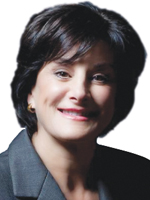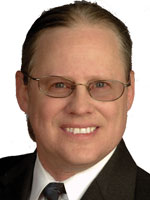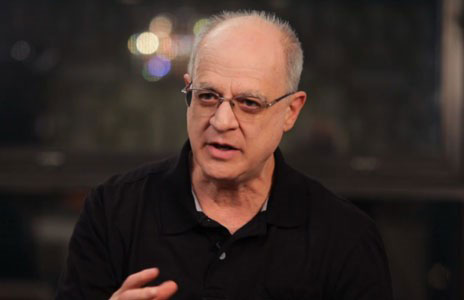All the (courtroom’s) a stage
Discussing [case]Theater for Trial[/case] with David Ball
What do Aeschylus’ Oresteia, Shakespeare’s The Merchant of Venice, and Arthur Miller’s The Crucible have in common? Each playwright used dramatic forms to explore questions of justice, setting the action of each play in a courtroom setting where that theme can be explored.
It is this intersection between the worlds of the theater and the courts that has intrigued famed trial consultant and author David Ball for decades. After a stint as director of Duke University’s theater department, Ball was looking for fodder for writing projects, which he sought at the local courthouse. Instead, he found a new calling.
He wrote an article explaining how theater techniques can be used in trial to improve communication with juries, which led to a thriving trial consultancy practice. Eventually, Ball’s methods and observations were codified in book form, 1994’s Theater Tips and Strategies for Jury Trials. Other books followed, including David Ball on Damages and then Reptile: The 2009 Manual of the Plaintiff’s Revolution.
Last November, Ball released the fourth edition of Theater Tips, retitled as Theater for Trial, adding coauthor Joshua Karton (Theater for Trial, David Ball and Joshua Karton, Hardback, 365 pp. Trial Guides, LLC (Portland, OR)).
Theater for Trial contains much you’d expect. There are several chapters which discuss specific performance techniques, like the proper use of eye contact, using your voice as an instrument, and how to move and gesture.
But it is when Ball turns to the unexpected that the book really takes flight. One would expect a book of this type to cast the trial lawyer as a performer speaking to an audience, in this case, the jury. Instead, Ball and Karton advocate co-opting the jury as co-author of the story.
They discuss not only the performance, but the necessary preparatory work without which the performance will fall flat. As any actor can tell you, ninety percent of the work involved in creating a living, breathing character on stage happens in quiet study and in the rehearsal hall, not during the live performance. The same is true for the trial lawyer who seeks to persuade a jury in the courtroom.
As Ball writes in the introduction, “The methods in this book are not improper, deceptive, or inappropriate. They are not ‘theatrical’ in the sense of showy or fake. Or over the top. They are effective, subtle, mostly transparent ways to communicate yourself and your case to jurors and judges.”
The author discussed Theater for Trial with David Ball by telephone in his Durham, North Carolina office. Their conservation – scheduled for fifteen minutes, but which stretched to nearly an hour – has been edited for length and clarity.
CM: You and I talked, by the way, many years ago. That really helped me a lot. There was a case that I was worried about and you got me started in the right direction.
DB: I’ve been following you ever since. You’ve got a great fan here.
CM: Thank you. So I was researching your background, and I see you have a Ph.D. in communications and theater. Did that come first, and only later translated to law?
DB: Well, the first thing I did was sciences and engineering and then the theater work, where, at least at the graduate level, the communication stuff was forced upon us. We didn’t want it. We were in a theater, we were artistes, don’t give us this communications crap. But we were forced to take a couple of courses. Small group communications for a theater person? I don’t want a small group. I want bigger audiences!
But you have to take some of these courses. And of course, even though a lot of science behind them was pretty much outdated by the time I started to do jury work, the basic concept of what it is like to analyze small group communications was what I learned about. And I think it’s still a very hard thing for people to understand that a big part of decision-making is the dynamics that go on among jurors during deliberations.
CM: Are you talking about, because this is interesting to me, the process they go through?
DB: Yeah, because it changes radically, and it alters radically what everyone thinks. If you have a jury of twelve people and change three or four of them who sort of feel the same way, it can still radically change the flow of the conversation and therefore how the trial comes out. And things that people never pay attention to unless they’re really good at it, in jury selection, is how does this person get along with that person? It’s why I’m always telling people that no matter how many focus groups you do, which is great, don’t underestimate the importance of watching a couple of major deliberating focus groups each year, so they develop over time a feeling for the dynamics of how jurors deliberate.
Lawyers just don’t have a clue, because all they do is feed information in and get a result. They really don’t know what’s going on in there, nor do they learn it from normal discussion focus groups. You’ve got to watch people deliberate.
CM: Can we talk some more about how you made the transition from theater to trial practice?
DM: I was running the theater department at Duke. Stopped doing that and went off to the woods to write for a year or two. And I got to the woods, and found this was lonely! With theater, it’s your life, it’s your love life, it’s your religion, it’s your social life, it’s your friends, it’s your work. It’s everything. It’s a very crowded world, and that’s one of the reasons theater people gravitate into the theater in the first place. So I just needed some place to be.
So I started going to the local courthouse in Durham, North Carolina, and just started watching trials. So I was working on a couple of playwriting projects that I thought might turn into something having to do with trials.
And I watched about a year or two. I would write most of the night and then watch trials most of the day. At first, most were boring, even though there’s no reason to ever be boring, since trials are based on conflict. And anyway, I mentioned one day a year or two into this to a lawyer, “All the problems you’ve got are the same problems we have in the theater. You know, we know how to solve them, obviously you don’t, because your trials are so boring.” He suggested I write an article about that, so I did, and it was published by the state trial lawyers’ association.
So a few months later I get a call from a lawyer asking, “Can you come help me on a case?” And I said, “No, I’ve watched for a couple of years. I’ve got stuff to say, but you have laws and things that I’m afraid of screwing up.” He said, “Well, I’ll tell you what: you should go take a couple of courses at the law schools. Most of those professors will let you just sit and listen. And read these books. “So I did, and I got utterly fascinated. The law is a very Talmudic kind of thing. The kind of thinking that I’ve always loved. At its ideal level, it’s a very scientifically structured thing.
CM: So I saw that you’ve done a lot of writing, but this is the first time that you partnered with Joshua Karton. I understand from what I’ve read that his contributions were the impetus to writing this new edition. What can you tell us about him?
DB: Well, I got to know Josh when I first started teaching a million years ago because everybody said, you’re from theater, he’s from theater. You guys, you’ve got to be friends. When we did, we got to be very close friends over the years because I was doing CLEs all over the place. I saw pretty much everybody who was teaching. I thought he was significantly, by a significant gap, the best teacher of performance skills that I saw. Just a very, very gifted teacher.
And I thought, he’s not getting any younger. You’re going to die and all this stuff is going to be gone. Other people do some of it, but not quite with the gift that he has. I started working on him to write something, and he wouldn’t, he wouldn’t. And the reason he wouldn’t, I know now, is because he is so meticulous and careful, and he knew it would be a huge chore. So I said, well, I’ll just interview you and write down the interviews.
So we did a bunch of the interviews, some of which are in the book, but then as he’s looking at it, he said this is going to be an enormous amount of work because we’ve got to get these things just right. And he did. So he actually did far more work than he ever would have if I hadn’t sort of tricked him into it because I so admire what he does. I don’t try to teach what he does, though I do some performance-level stuff, a lot of charisma stuff. But in terms of actually doing the workshops, he is, as far as I’m concerned, the real master.
CM: Your idea about motivation, in talking about that you’ve talked about this concept of “attention vigilance.” So how do you make the jury understand what is important? I understand the connection piece, where, say, I put on evidence of spinal anatomy and I say we’re going to talk about this section of the spine, and it’s important because that’s the area of injury. And then we do that, and then we close the same way. But how do you really link current content to the jury’s need for information?
DB: In terms of this book – because there’s a ton of different ways to do that and you need to really kind of understand them all – but in terms of this book, when you have a person who is being their full selves in front of the jury, which is what Joshua teaches – how do you put yourself one hundred percent in front of that jury? It’s like a great singer. You feel nothing’s being held back here. I’m seeing the whole soul when they sing. That can be a rock singer or classical singer or anything, but there are some singers where there’s such a clarity of transmission. When you combine that with the proper kind of structure, what you basically have is a person I’m paying great attention to who is giving me something in a way that I can’t help but pay attention to it.
So placement and structure of what you’re trying to do is really my department and then the person who’s doing it – I’m thinking of myself as a playwright and Joshua as the actor – and it’s the same thing here. In theater, there’s all sorts of ways to get an audience to pay attention. It can be a shift in rhythm, a shift in topic, the structure of a speech, things you repeat, things you don’t.
There are lists of phrases you can use to get the jurors’ attention. I’ll go so far as to say, “You know, this is something you might want to write down for deliberations.” I will ask people to say frequently during the case, “Mr. Witness, the jurors are going to have to talk about x, y, and z during deliberations. Can you tell us how clear a view did you have of that red light?”
What you’ve done is not only highlighted that, but you kept the jurors remembering that they’re going to have to use this information. That means they’re motivated to listen to it because they know they’re going to have to get back there and talk about it.
CM: Dan sent me an email and said, “I think the heart of this book is Chapter Seven, ‘Cast Your Best Self.’ Will you please ask how trial lawyers can be sure they’re right for the part?”
DB: It’s really very simple. This is exactly the same as I used to teach my acting kids. You have within you more different selves than you know. Each of your different selves are as different from each other as I am from you.
There’s a self for every occasion. The brain automatically shifts everything that needs to be shifted at once. You can’t do it consciously, so the basic way you do it is you can make the intellectual, logical decision, what is the best self, if I could cast from anyone in the world, what is the best self that I could use during this process?
What you do is you choose an analogous situation from life that’s not the situation that you’re in. But it’s the situation that would elicit whichever the different view that you would like to be seen as having in that situation. For example, on cross-examination, you may think, “I hate this SOB on the stand. He’s a liar. He’s a miserable bastard. He was trying to hurt my case, insult me, hurt my client. I feel hate and anger.” Well, most people know that that’s no mood to show, and not the person you want to be to do that examination. You want to do it patiently, professionally and maybe even with some sympathy for this poor human being up there, because you want to let him hang himself. So you ask yourself, “Where in life do you feel some patience and even some sympathy with people?” It doesn’t need to be at all analogous in terms of situation, it’s analogous only in terms of: which person do I want to be? When am I that person in real life?
CM: For me that would be when I taught disabled kids and they were frustrating the heck out of me. And I just knew I had to protect them as well as I could. That’s where I’d have to go.
DB: Perfect. Absolutely. I mean, it’s the same as great acting. You can have somebody who would never kill a living thing in their lives, but then they have to kill onstage. You remember a time you were in the shower which suddenly started blasting scalding hot, you couldn’t get out. You had to turn it off. You went to throttle the valve to stop that damn thing. Well, you recall that as you’re doing it, then you put yourself there, which is what the exercises in the book will help you do. That’s basic method acting, by the way.
CM: We can wrap it with that, but I just want to give you the opportunity to tell us why trial lawyers should read your new book.
DB: Trial is still a live event and you, if you want to do well, are its central character. It’s about your clients, it’s heavily about the defendant, but it is ultimately about you as the purveyor of this whole affair and who you are and how you do it, how you come across to the jury in ways you would never expect. You need to get in control of that. This book will take you a very long way along those lines, and also teach you how to continue developing it as the years go on past reading the book.
Cynthia McGuinn

Cynthia McGuinn has represented plaintiffs in catastrophic injury, wrongful death, products liability and, professional negligence matters for over 30 years. She specializes in jury trial work and often consults with and tries cases for attorneys with matters going to trial. A partner in the San Francisco firm of Rouda, Feder, Tietjen & McGuinn, McGuinn was a 2003 San Francisco Trial Lawyer of the Year and has been recognized annually as one of the “Top 50 Woman Litigators” in California since 2005. In 2011 she received the American Board of Trial Advocates Masters in Trial Award for her work in teaching trial skills to attorneys. She is the incoming president of ABOTA for 2018.
Daniel B. Pleasant

Daniel B. Pleasant, ACP, CAS, is a writer and editor at Rouda, Feder, Tietjen & McGuinn. He was certified by the National Association of Legal Assistants in 2002 as a Certified Paralegal. He has also garnered advanced certification in Discovery, Trial Practice, and California Civil Procedure. Dan focuses on writing mediation briefs, drafting motions and appellate briefs, and preparing cases for trial.
Copyright ©
2025
by the author.
For reprint permission, contact the publisher: Advocate Magazine

